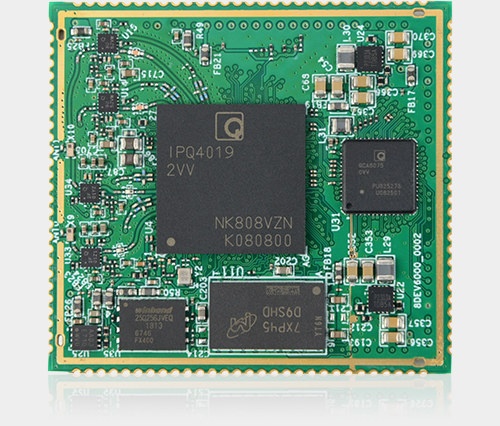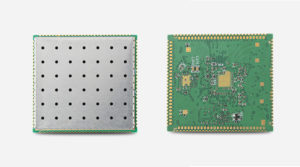Last April, we first wrote about Qualcomm IPQ4019 quad-core Cortex-A7 processor with built-in 802.11ac Wave 2 WiFi, as it was found in Qualcomm Mesh Networking DevKit with support for Amazon Alexa. A few months later, we discovered router boards powered by either IPQ4019 or IPQ4029 processor such as Dakota DR40X9 or MikroTik RB450Gx4. The latter does not come with WiFi at all and instead leverages the hardware IPSec encryption built-into the processor.
Habanero System-on-Module
Today, we’ve come across the first IPQ4019 / IPQ4029 system-on-module we’ve countered so far, courtesy of 8devices with their Habanero and Habanero-I 802.11ac Wave 2 modules based on the respective processors.
Habanero(-I) specifications:
- SoC – Qualcomm IPQ4019/IPQ4029 quad-core Arm Cortex-A7 processor @ 717 MHz with NEON, FPU, hardware-based NAT engine, and crypto accelerator
- System Memory – 512 MB DDR3L RAM
- Storage – 32MB NOR flash; up to 1 GB NAND flash on baseboard
- Connectivity
- QCA8075C 5-port Gigabit Ethernet transceiver
- Dual-band 802.11a/b/g/n/ac Wave2 Wi-Fi 5 2×2 MiMo up to 866.7Mbps (5 GHz) and 400 Mbps (2.4 GHz)
- Max output power – up to 22 dBm per chain
- Castellated holes and pads exposing the following signals

Top of module with shield (left), bottom of module (right) – Click to Enlarge - 46x GPIO
- 1x PCIe 2.0
- 1x USB3.0, 1x USB2.0
- 2x UART, 1x SPI, 2x I2C, 4x PWM,
- 1x JTAG
- 1x I2S/TDM
- 5x 1000/100/10 Ethernet interfaces, 1x RGMII
- 1x SDIO3.0/eMMC interface, parallel NAND flash interface (multiplexed with LCD?)
- Parallel LCD interface (MIPI DBI 2.0)
- Power supply – 3.3V, max power consumption 11.5W
- Dimensions – 49 x 45 mm
- Temperature Range – Commercial: 0-65°C; industrial: -40-85°C
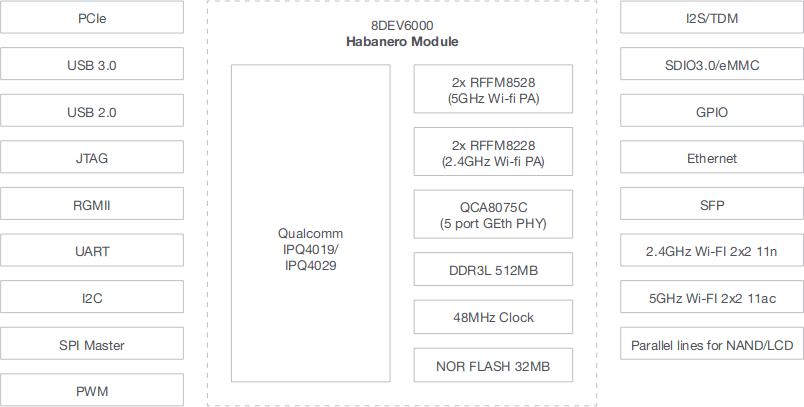
The company provides an OpenWrt Linux image for the board that boots from the NOR Flash. Both OpenWrt and U-boot (Caraboot) source code appears to be available on Github here and there.
There’s no detailed information about the differences between Habanero (IPQ4019) and Habanero-I (IPQ4029), but last time we have seen IPQ4029 supports “Qualcomm IoT Connectivity”, and is also available with an extended temperature range of -40°C to +110°C.
Habanero DVK
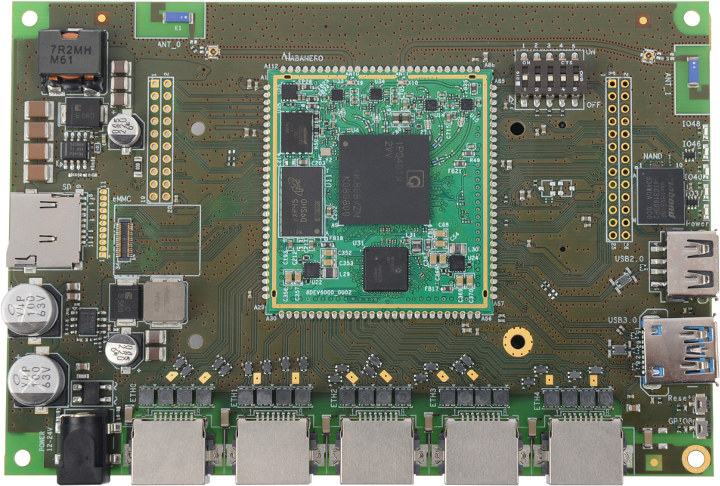
8devices also offers Habanero DVK for early software development and evaluation. The development board comes with the following features:
- Habanero module with processor, memory, WiFi, Ethernet PHY… as described above
- Storage – External NAND flash, SD card socket, and eMMC module connector
- Networking – 5x Gigabit Ethernet ports; 2x chip antennas for WiFi
- USB – 1x USB 3.0 port (5V/1A), 1x USB 2.0 port (5V/1A)
- Display – FPC connector
- Expansion
- Unpopulated headers:
- 26-pin J13 header with GPIOs, 3.3V, and GND
- 11-pin J17 header with more GPIOs
- 20-pin J18 header with GPIOs, UART, RESET, 5V, 3.3V and GND
- PCIe slot
- Unpopulated headers:
- Misc – Reset and user (GPIO8) buttons, power and 4x user LEDs, 4x heatsink mounting holes, bootstrap switches
- Power Supply – 12V-24V via power barrel jack
- Dimensions – 140 x 95 mm
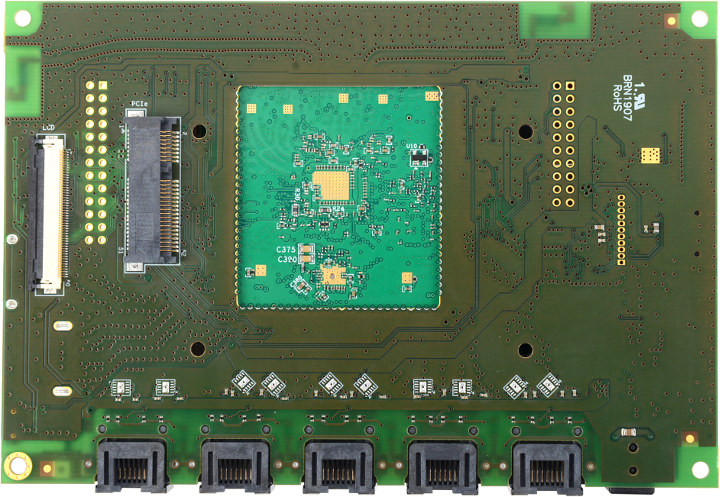
Habanero module is sold for $55, Habereno-I module for $69, and the development kit for $119. You’ll find more details and links to purchase online on the product page.
Via Electronics Lab

Jean-Luc started CNX Software in 2010 as a part-time endeavor, before quitting his job as a software engineering manager, and starting to write daily news, and reviews full time later in 2011.
Support CNX Software! Donate via cryptocurrencies, become a Patron on Patreon, or purchase goods on Amazon or Aliexpress


